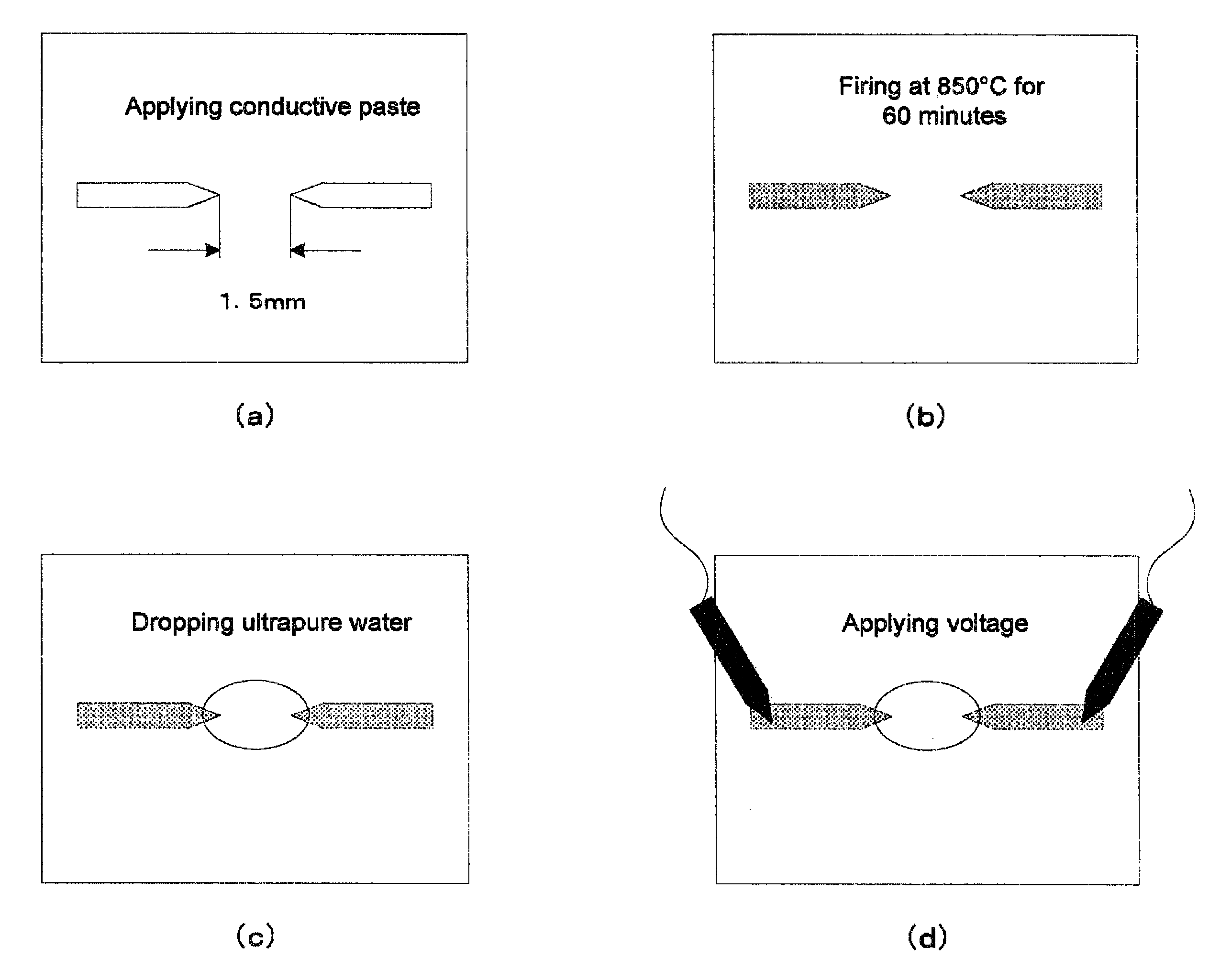Conductive paste
a conductive paste and conductive technology, applied in the direction of electrically conductive paints, conductive pattern formation, printed circuit non-printed electric components association, etc., can solve the problems of inability to withstand oxidation, inability to inhibit silver, and prone to electromigration, etc., to achieve excellent electromigration resistance, soldering heat resistance, and adhesion to a substrate
- Summary
- Abstract
- Description
- Claims
- Application Information
AI Technical Summary
Benefits of technology
Problems solved by technology
Method used
Image
Examples
examples
[0088]A description is given below to Examples and Comparative Examples of the present invention.
[0089][Materials for Conductive Paste]
[0090]The components (A) through (F) below were mixed at ratios of First through Twelfth Examples described in Table 1 and Table 2 and First through Seventh Comparative Examples described in Table 3 to prepare conductive paste. All ratios of each component in Tables 1 through 3 are shown in parts by mass.
[0091](A) Silver Powder
[0092]Silver powder in a spherical shape having an average particle diameter of 5 μm.
[0093](B) Glass Frit
[0094]Bi2O3—B2O3 based glass frit having an average particle diameter of 5.2 μm and a softening point of 440° C.
[0095](C) Organic Binder
[0096]As the organic binder, one produced by dissolving an ethylcellulose resin in butylcarbitol was used. The ratio of mixing the ethylcellulose resin and butylcarbitol is 30:70 (mass ratio).
[0097](D-1) Powder of Alloy Containing Copper, Tin, and Manganese
PUM
| Property | Measurement | Unit |
|---|---|---|
| mass ratio | aaaaa | aaaaa |
| particle diameter | aaaaa | aaaaa |
| viscosity | aaaaa | aaaaa |
Abstract
Description
Claims
Application Information
 Login to View More
Login to View More - R&D
- Intellectual Property
- Life Sciences
- Materials
- Tech Scout
- Unparalleled Data Quality
- Higher Quality Content
- 60% Fewer Hallucinations
Browse by: Latest US Patents, China's latest patents, Technical Efficacy Thesaurus, Application Domain, Technology Topic, Popular Technical Reports.
© 2025 PatSnap. All rights reserved.Legal|Privacy policy|Modern Slavery Act Transparency Statement|Sitemap|About US| Contact US: help@patsnap.com

